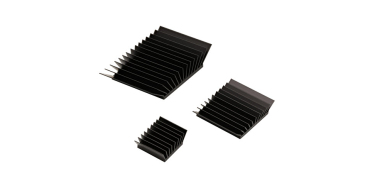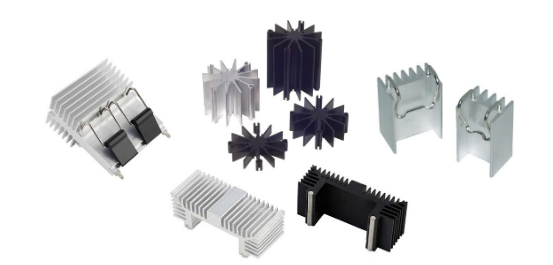Heat Sink Thermal Resistance
Heatsinks are indispensable components in electronic systems, playing a vital role in dissipating excess heat generated by electronic devices. However, selecting the right heatsink for a specific application can be a daunting task for engineers. To simplify this process and ensure optimal heatsink thermal resistance and management, let's explore what engineers need to know when selecting a heatsink.
What Engineers Need to Know When Selecting a Heatsink
Understanding Thermal Requirements
Before diving into heatsink selection, engineers must thoroughly understand the thermal requirements of their application. Factors such as power dissipation, operating temperature, ambient temperature, and thermal resistance play a critical role in determining the appropriate heatsink.
Calculating Power Dissipation
Determine the maximum power dissipation of the electronic device or component that requires cooling. This information is crucial for selecting a heatsink with the appropriate thermal capacity to dissipate heat effectively.
Identifying Space Constraints
Assess the available space for mounting the heatsink within the electronic system. Consider the dimensions, clearance, and mounting options to ensure compatibility with the system layout and mechanical constraints.
Choosing the Right Material
Heatsinks are commonly made of aluminum, copper, or their alloys due to their excellent thermal conductivity. Aluminum heatsinks are lightweight and cost-effective, while copper heatsinks offer higher thermal conductivity but are heavier and more expensive. Select the material that best suits the thermal requirements, budget constraints, and weight considerations of the application.
Determining Thermal Resistance
Thermal resistance, often denoted as Θ (theta), quantifies the ability of a heatsink to dissipate heat. Lower thermal resistance indicates better thermal performance. Calculate the thermal resistance of the heatsink using the formula Θ = ΔT / P, where ΔT is the temperature difference between the device and ambient, and P is the power dissipated by the device.
Choosing the Right Fin Configuration
Heatsinks come in various fin configurations, including straight fins, pin fins, and zigzag fins. The choice of fin configuration depends on the airflow conditions, space constraints, and thermal requirements of the application. Opt for a fin configuration that maximizes the surface area for heat dissipation while ensuring efficient airflow across the heatsink.
Accounting for Environmental Factors
Assess the operating environment of the application, including temperature variations, humidity levels, dust, and vibration. Choose heatsinks with appropriate environmental ratings and robust construction to withstand the specified conditions and ensure long-term reliability.
By meticulously evaluating these factors and leveraging thermal analysis tools and simulations, engineers can confidently select the most suitable heatsink for their application. Whether it's in power electronics, LED lighting, computer systems, automotive electronics, or industrial machinery, effective heatsink selection is crucial for maintaining optimal thermal performance and ensuring the reliability and longevity of electronic systems.

Heat Sink Applications
In applications where electronic devices generate significant amounts of heat, the use of heatsinks becomes essential, Ohmite provides heatsinks. Call now!
Read More
Types of Heat Sinks
In the realm of industrial electronics, effective thermal management is paramount for ensuring the reliability and longevity of electronic components. Call now!
Read More
